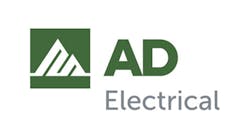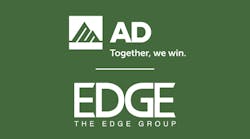Click it. Scan it. Swipe it. Close it. There’s no real reason to read it, because you tell yourself, “Oh, I can come back to this later.” Electronic print, or digital media, allows us to skim a lot of information without actually retaining it. A glimpse, it seems, is not enough time to imprint the data on the ol’ cerebral cortex in order to recall it later.
Digital is illusive. Print, on the other hand, is immersive. It has permanence and visibility. Your brochure that you dropped off in the morning will likely be on your customer’s desk for the rest of the day. Even if he doesn’t focus on it, it’s in his peripheral vision. And after-hours, when things settle down, he’s likely to pick it up and casually take a look. It’s still selling after you’re gone. No Wi-Fi needed.
Compare that to directing your customer to an online product catalog. If he opens it at all, his attention will be sucked away by the chimes of new texts, e-mails, flashing banner ads, and social media updates.
Print engages us. Perform a casual survey the next time you’re in an airport. Look at the masses staring at screens. They are swiping and tapping with a kinetic intensity. Meanwhile, the individuals reading magazines, books or newspapers are casually turning pages, pausing to read a paragraph or peruse an article.
A printed piece held in your hand sends a message to your brain: This is something of substance. In the same manner, a heavier weight paper creates an air of importance, just as a thick business card can bring a sense of gravitas to you and your company.
“Print communicates that a company is successful and is willing to invest in their own message, creating the perception of respectability and that they value their customers,” says Shelly Fagan of Digital Print Solutions.
THREE WAYS TO EFFECTIVELY USE PRINT
1. Personalize and print. Take advantage of online literature by customizing it with your company’s information. Let’s say your customer needs a cut sheet for a LED lamp. Download and save the relevant PDF from the manufacturer’s website. Then, open it in a photo-editing program and embed your company’s contact info directly into the document. Include your online URL or a QR code that points to your website.
Often the PDF will have a white rectangular box for just this purpose. Print your material on a color printer using at least a 24 lb. brochure paper. Now you have a custom marketing piece with a professional, personalized appearance that gives your company credibility and allows you to draw on the strength of the manufacturer’s brand. It will deepen your customer’s perception of you as the vendor of choice when it comes to choosing this brand. P.S. — If your branch doesn’t have a color printer, then buy one. Nothing says “cheap” like a black and white spec sheet.
2. Prepare and present. As simple as it may sound, handing a brochure to a customer actually requires finesse. I learned the hard way when I made a sales call to three electricians at an industrial. I handed each of them a brochure and started talking about the product. Each electrician was looking down at the brochure, and I could tell they weren’t really listening to anything I was saying. Oh, sure, they’d pick up bits and pieces and nod just to make me think they were paying attention. Well, a wise man learns from the mistakes of others, so here’s the word to the wise: You can’t expect a customer to listen to you when you’ve just put a document in his hand. He’s going to read the thing he’s holding, or look at the pictures, and your dialog will be ambient noise.
So, you have a choice. You can tell your story before you hand him the marketing piece, or you can simply hand it to him with a brief intro and shut up. I know. It’s hard to leave that dead air hanging out there, but give it 30 seconds. By then, the customer’s had time to at least form an opinion of whatever it is you’ve handed him. Ideally, the customer will speak first, ask a question or make a comment. And, if he doesn’t, then you can ask, “What do you think?” This is a good segue into your prepared sales proposal.
3. Post and parcel. The U.S. Postal Service’s annual survey, the Household Diary Study, tells us that whether we like receiving it or not, 79% of us read or scan advertising mail sent to our address. Known to marketers as direct mail, this archaic means of communication can be found in the form of cards, flyers, brochures or even a personal letter. Print mail now is enjoying a re-birth, as savvy marketers learn to take advantage of its diminished presence. In other words, because it’s used less frequently, it stands out more. This is a way to get your company’s name onto the desk of an appointment-resistant customer when you’ve hit a brick wall. And although direct mail is no substitute for a face-to-face sales call, it’s an effective way to multiply your presence by putting your name in front of your customer between sales calls. Add direct mail to your arsenal of sales tools and you will add depth to your brand.
“Who’s on First”? Click it and swipe it, or print it and read it. This isn’t about who’s winning. Digital is here to stay and for now, so is print. The two work in tandem. Any print piece should provide a path to your online presence, either by QR code, or a URL link. And any website should provide the means to print a PDF spec sheet. Leave it to your customer to decide which comes first — digital or print. As far as you’re concerned, your customer comes first.
The author is the founder of High Voltage Performance, a consulting firm that specializes in designing customer experiences for the industrial marketplace. Dandridge has 25 years of experience in the electrical market, including sales and management positions with Rexel. He also authored the books Thinking Outside the Bulb and Business Turnaround. He is available for speaking engagements and can be contacted by phone at 214-708-2534 or by e-mail at [email protected].









